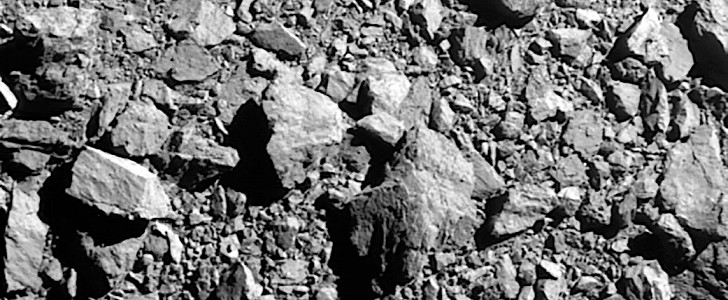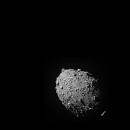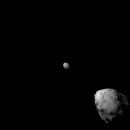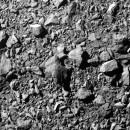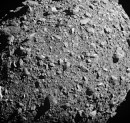Enough time has passed since the Double Asteroid Redirection Test (DART) spacecraft impacted its target asteroid for the dust to have settled on this piece of news. Or, so you’d think, and you’d be wrong, as the really exciting part for scientists is only now beginning.
On September 26, DART ended its months-long journey by slamming at 14,000 mph (22,530 kph) into a small asteroid called Dimorphos. This piece of rock is orbiting a larger piece of rock, called Didymos, and that’s precisely why it was chosen as a target.
You see, DART’s goal was to prove to us humans that we are advanced enough to 1) direct a projectile toward an asteroid that might one day threaten us and 2) make the force of the impact enough to alter the thing’s course. Because Dimorphos has a set orbit around Didymos, seeing if the impact altered its motion is easier to do.
Thanks to the gear it was equipped with, DART was able to record the last moments of its trip, and the short video and images already released are stunning and have already made the rounds. NASA gave this mission another 15 minutes under the spotlight this week though, by releasing what it calls “the last complete image of the asteroid Dimorphos” DART captured before being obliterated by the impact. A sort of ICYMI, if you like.
The photo, the main one of this piece, shows a 100-foot-wide patch of the asteroid that looks eerily similar to a patch of ground in any of our backyards. But make no mistake about it, what you’re looking at is a completely alien piece of real estate.
We said earlier the fun part of the DART mission is just beginning for scientists. They’ve already expressed their amazement at how the impact resulted in the asteroid getting really bright and staying like that for hours, but now the real hard work begins: determining if, and by how much, the impact changed the smaller asteroid’s orbit around its larger sibling.
You see, DART’s goal was to prove to us humans that we are advanced enough to 1) direct a projectile toward an asteroid that might one day threaten us and 2) make the force of the impact enough to alter the thing’s course. Because Dimorphos has a set orbit around Didymos, seeing if the impact altered its motion is easier to do.
Thanks to the gear it was equipped with, DART was able to record the last moments of its trip, and the short video and images already released are stunning and have already made the rounds. NASA gave this mission another 15 minutes under the spotlight this week though, by releasing what it calls “the last complete image of the asteroid Dimorphos” DART captured before being obliterated by the impact. A sort of ICYMI, if you like.
The photo, the main one of this piece, shows a 100-foot-wide patch of the asteroid that looks eerily similar to a patch of ground in any of our backyards. But make no mistake about it, what you’re looking at is a completely alien piece of real estate.
We said earlier the fun part of the DART mission is just beginning for scientists. They’ve already expressed their amazement at how the impact resulted in the asteroid getting really bright and staying like that for hours, but now the real hard work begins: determining if, and by how much, the impact changed the smaller asteroid’s orbit around its larger sibling.
